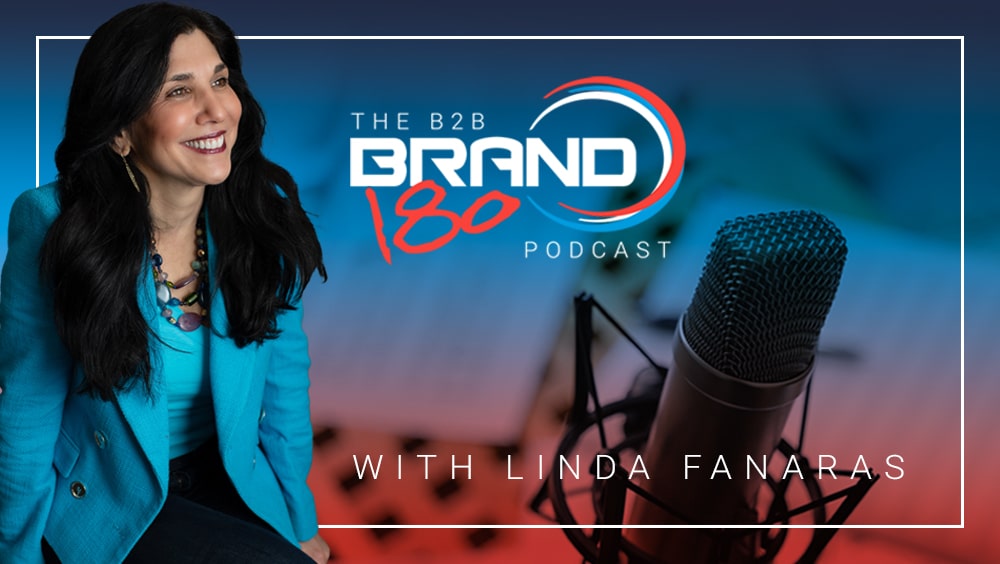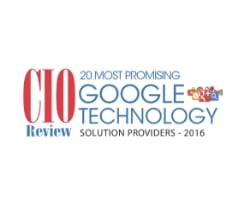In this episode of B2B Brand180, Linda interviews Cody Schneider, Co-founder of Swell AI. Cody discusses the transformative power of AI in B2B marketing, focusing on its impact on marketing efficiency, customer engagement, and scaling businesses. Tune in for practical tips and insights for marketers and entrepreneurs looking to leverage AI for their business growth.
Follow Cody: https://www.linkedin.com/in/codyxschneider/
You can follow Linda at: https://www.linkedin.com/in/lindafanaras/
and visit Millennium Agency at https://www.linkedin.com/company/millagency/
Linda Fanaras:
Hi, I’m Linda Fanaras, host of B2B Brand CEO of Millennium Agency. And we’re here to talk about branding, marketing, and lead generation strategies. But before I start, I just want to thank our listeners today. And if you like what you hear, please like share or subscribe to help our channel grow. I’m super excited to bring in Cody Schneider from Draft Horse ai, and he’s scaled companies from 20 million to 120 million in valuation in six months, and now he’s really focused in on ai. Now, we have been talking about AI a lot lately, but what we’re going to discuss today is how marketing teams can use AI to scale. their workload and scale their business. So welcome, Cody. Thanks for coming to the Yeah, it’s great to have you today. So no, I’m excited to, I’m excited to see how we can all implement this into our business. So let’s just start with a quick introduction. Cody, do you want to tell us a little bit about yourself?
Cody Schneider:
Yeah, I’ll just high level worked in B2B marketing agencies for forever. Then somehow ended up in Silicon Valley. Working at an early stage startup they’re one of the Things that I really like piloted and kind of brought to life was our content marketing engine. So what we were focused on was how do we build some basically a owned media that we could have for distribution and then use that as leverage within negotiations. We were a three sided marketplace. So we had customers. And then we also had people that were selling a platform. And so we needed a way to basically create distribution. And so that’s what I did there. We took that company from a 20 million valuation to about 110 120 and about six months. It was honestly crazy. It was one of those, one of those curves you live for, right. Where it’s just like exponential up into the right. And yeah, so, we scaled headcount. I was hired as like employee six there. We scaled headcount too. I think when I left, it was like about a year later and we were at 70. So it was one of those things like zero to one, which is wild. And then, so I left that company. And then did some consulting and then really quickly, we saw this was in July of this last year that AI was finally getting to the point where it was actually usable as a marketer. And so everybody I knew that was in early stage startups was like, okay, how do we basically start to employ this technology to scale out our content production process? And so. That’s really what I’ve been building for the last year and a half is, is these types of tools that help marketing teams really like scale out their, their content marketing production.
Linda Fanaras:
So let me ask you a couple questions just on your background, and then we’ll touch into the ice stuff. So to help these teams grow as quickly as possible. But it sounds like you’ve had some multiple startups. I mean, do you have some tips that you would give entrepreneurs who are just starting out and in their industry and in their market who really want to
Cody Schneider:
scale? So kind of two things. First I would, it depends on if you’re self funding or if you’re going, you know, the traditional VC back route. So if you’re self funding build some type of engine that spits off cashflow. So you have that free cashflow to basically parlay it into like whatever that product is that you’re creating. What I see a lot of people do is building a digital agency. They scale it to, you know, 20 ish people. And then at that point you typically have enough where it’s like, okay, I can go hire an offshore team and create some type of software that serves this customer that I’m also serving. So that’s a lot of the times the playbook and the self funded route, if you’re VC backed, it’s basically find product market, get fit as fast as possible and grow as quickly as you can and deploy that capital as quickly as you can. What I see work most often is four companies. And this is for both of those, whether it’s self funded or VC backed and you’re in like software as a service. Is focusing on one to two channels that’ll get you to like that first million ARR like yearly reoccurring revenue. A lot of the times it’s some type of display ad and cold email. Like I’ve seen, you know, five companies in the last two years do it with just that. At that point, then you can start thinking about, okay, what are these other marketing strategies and tactics that I can layer on, on top of that. But really those, I like to talk about it this way. It’s transactional marketing and that first, you know, 1, 000, 000 like you’re trying to do something where it’s like I do an action and immediately there’s a response, right? And then after that, that’s when I start to invest in that long, you know, there’s more longer term payoff strategies whether that’s SEO or I build, you know, organic social accounts or I build a newsletter, et cetera. So,
Linda Fanaras:
That’s great insight for, our audience today. Are there certain Marketing strategies that you think work better in companies. I know it’s going to depend on the audience, the target target. But I think for somebody that’s starting out, if you do keep that target audience in mind, are the key tactics that they should be really employing that will be as successful as possible. I mean, you just talked about cold calling and email marketing. I mean, that’s very doable. Direct mail is even doable. So just curious
Cody Schneider:
than ever before. Also, yeah, we sent like, I think it was a hundred thousand flyers through an API, there’s direct mail APIs now, and you have access to like that, the actually like the zip code data is actually really, really rich now. Okay, cool. We can hit this whole area. I did this for a. A company that was in the real estate space. They were based out of Houston. And it was honestly, I was shocked how cheap it was. It was cheaper than Facebook ads. I’m like, where did we end up here? But yeah, to, to answer that question, I think the biggest mistake I see founders make most often is they don’t identify where their customer is spending time online or offline. From the beginning, right? They think they need to be everywhere. And in reality, there’s probably like one or two places where the majority of information and people are So as an example, you don’t need to be on twitter if your audience isn’t on twitter, so if you’re like in the women’s health space, that’s probably not where your audience is most likely. They’re probably more on Instagram or Facebook. So investing in those places where your target customer is most likely. And then I think the other thing tactically, it’s just do things that are repeatable. You’re trying to build processes that I can do over and over and over again. Focusing on those two things, I feel like often just create way more impact for early stage companies rather than trying to do a ton of things. It’s like, again, focusing on those one or two channels and just hitting the pavement. Really? It sounds so simple, but in reality, it’s just that, right? If I send a hundred thousand cold emails to my target audience, probably going to get customers out of that. So it’s figuring out, how do I do that? Right. So,
Linda Fanaras:
That’s great. Because I think what happens is a lot of marketers will try a different meet several, all kinds of different mediums. And then they realize like, okay, how do we track all this? So the tracking gets lost and they’re not able to actually scale based on what they’re doing, because what’s happening is they’re doing too much, it’s too fragmented and they’re not able to focus on anything that’s actually successful So I think I love that tactic that you’re talking about. How do we focus and how do we build out processes that actually work? So maybe you’re focused in on an industry or two, and then maybe you just focused in on a marketing medium and, or two, and then, okay, how does that look when we’re done? Totally. How does that actually work?
Cody Schneider:
Go ahead. Totally. An example of that is like, okay, say I’m trying to sell software to funeral homes. Right. I go find every person that works at a funeral homes email. I use a tool like Apollo dot IO. They basically scrape LinkedIn and then they find all these emails and validate them for you. I take those emails. I cold email them that same email list. I can upload that into Facebook and LinkedIn and Google, and it does a customer match list, and then I do display ads to that same audience. So what. From a user like what they experience is they get a cold email from you and then they’re seeing you everywhere on social so really quickly you can start to own that mental real estate with just those actions rather than, okay, we’re going to spin up a YouTube channel and a podcast and now we’re going to do Twitter and we’re going to do Instagram real. So it’s like, no, like that those two actions together, that sounds super complicated. But that can get that business, off the ground again, that zero to one. And that’s, that’s where I’ve spent a lot of my time. So I’ll probably talk about that more. Getting to scale is a whole other thing, right? Where it’s like, how do I manage a hundred person marketing team? And like be effective there. Right. But so anyway. Yeah,
Linda Fanaras:
and that’s also you brought up a great point because I think what happens is when you’re identifying a list or you’re identifying your perfect or your ideal customer. Okay. Who are they? Where are they located? You know, what type of industries are they in? What are all those questions? And then you are pulling that list. And then you’re repeating some different tactics and strategies within that targeted list. So you’re not just hitting them once and forgetting about it because I think that’s another thing that happens with a lot of marketers. Like, like we talked about earlier, it’s fragmented. Let’s try this. Let’s try that. Nothing seems to be working. This worked okay. Well, it doesn’t work that way. It’s really identifying who your ideal customer is and then building out. A model or a list that you can just target in multiple different mediums. It could be Google, it could be Facebook, it could be other, it could be direct mail, email marketing, and that’s that 360 approach that really can make a difference.. It’s great. So tell me, so you’re the founder of Draft Horse. So how has AI actually transformed your ability to generate content at scale? I
Cody Schneider:
mean, it’s, it’s crazy. I don’t like we, so. Just for context we built an a company originally that was like content repurposing. So you give it like a video, say like a, you give it a webinar and it’s like, I can make clips and I can make articles and make tweets and make LinkedIn posts. It just takes it basically transcribes it and transforms it into like whatever that media is that you’re trying to publish. We built an internal tool to do SEO at scale. So write SEO articles at scale. I was talking about it in public on Twitter. People were like, Hey, I want that tool. So we ended up spinning it out of this other company and it went viral. And that’s what became draft horse. But basically what, what we’ve seen and what it, how I’m thinking about it more and more is I’m looking at the processes that my marketing team that we’re doing previously in the content production, space. So like how, what are those, what, which of those pieces can I abstract? And like have AI augment. So as an example, which just to use draft horse as that example like if I wanted to write content previously, I go and I would do keyword research, I would then build out a template for the article that I want written, I would then hand it off to my article writer, and then that article writer would write it, a copy editor would edit it. They would then publish it and then it’s live on the website of me to try to get that index basically so that we can get organic traffic. So what we found is that AI is really good at building out the article template and writing the articles, and then we can just build an integration that publishes. you know, directly to our WordPress site as an example. And so traditionally, like if I wanted to write a thousand articles and they like, and I hired article writers, that would cost me a hundred dollars per article. So that’s a hundred grand that I would spend, spend as a company. And that’s you know, traditionally when I would go to an SEO agency, like that’s a huge part of their cost structure, like what they’re upcharging us. So now, you know, with AI, I can take that same thousand articles. I can write it for like 500. So that’s the arbitrage that exists here. And so this is what we did. We just like, we’re like, let’s just publish, you know, like 25, 000 articles to a website and see what happens. Right. And so we did this in the health space, as an example. And it, like it now gets over 1, 500 clicks per day. It drives like hundreds of eBooks downloads. And then that’s just like lead gen into a telehealth company. So this was like a partnership that we did, but we’re seeing this, like, it can be applied in every space. And then the example of this is I’m looking for these keywords that are very transactional and related to my business. For example, I have like a software that’s, sMS marketing, right? So it’s like SMS marketing for hotels, SMS marketing for doctors, SMS marketing for, you know, X, Y, Z. Okay. I find all of those keywords. I write all of this content, I publish it. And I’m like, it just increases the volume and reduces those costs. And so I’m just creating like a wider net than I used to be able to previously. And then again, we’re seeing this both like that’s, I call that commodity content. So it’s like using the, the general knowledge of the AI to write. But there’s even like a layer down from that where I can go and I can interview industry experts. So like, say I go talk to five cybersecurity people about, you know, say like identity verification. Right. And I can then record those conversations and I can use that transcript as source material and say, okay, now we want to write about keyword X, you know, keyword one, keyword two, keyword three. It, you, we basically can limit the AI. To say, this is that source document that I want you to pull the knowledge from use your general, writing capabilities, but use this as like where you’re going to, you know, source that information. And that’s how we can create this like branded content that nobody else has that’s based off of industry expert knowledge and like insider information. So there’s kind of these two different ways to do this. Well, we’re seeing companies employ this like in both ways. Cause they’re, they’re trying to be everywhere, right? Like I’m trying to be a thought, I’m trying to create thought leadership content. And I’m trying to create that commodity content. So let’s do both of those things. And these are these different ways that we can use AI to employ that. So. Yeah,
Linda Fanaras:
That’s a good point because obviously Google loves relevant content. So if you’re busting out a lot of content for a website and it’s relevant, then obviously they like that. So that makes sense on how that all works together. So before we get To our next question, I just wanna take a minute and thank our audience today for listening in. And if you like what you heard, please hit like, share or subscribe and also provide a review to B2B brand 180. Podcast. So Cody, what trends do you actually see that are maybe emerging that, you know, industries could take a look at in the coming years because everything is changing so rapidly, I think right now. And we’ve seen huge changes over the last 10 years. Are there anything that, is there anything that you could see as far as disruptive tech, you know, industries and technologies that are coming around the corner?
Cody Schneider:
Yeah. I think search is so screwed. And just to like, be blunt I just saw data that was showing that Gen Z trust, TikTok search more than it trusts Google. And they’re going there for all of their basically like discovery, right. And education and all of this. And it kind of makes sense when you think about it. If I have an AI now. That can just bulk generate content. Right. And I’m trying to sell this product. Right. There’s less trust that’s baked into that with like a random website than there is. If like, okay, I’m a content creator and it’s my face. And I’m telling you that this is a solution to the problem that you just searched on, you know, TikTok, Instagram, Reels. So that’s a huge trend that I’m seeing change. I think the other thing that we’ve been seeing just in the data from like all of our clients, like we work with a bunch of media producers, right. That are you know, like some of them have, you know, 400 shows. Right. And so it’s the publishing, like it’s like 1500 different pieces of content, you know, like long, like hour long pieces of content each each month. But the thing we’re seeing with them and hearing from them is that. Content that is less refined is doing better. So like when it’s overproduced or it feels like it doesn’t feel like it’s social native. So people are wanting things that feel like they’re coming from their social media applications, right? Like something that you would make an Instagram or something that you would make in TikTok using their, you know, basically editing tools. We’re seeing both that content get more reach. Like provide more business value because it doesn’t feel like I’m being sold in a way. And that’s like really what we’ve kind of come to the conclusion. It’s more raw and providing me value rather than trying to convince me of this thing. And we’re seeing this more and more, especially in early stage companies where they’re just hire a content creator. And this is probably the third trend. That’s like the big thing is like, we’re starting to see people on salary their title is YouTuber, right. Or like a TikToker, their whole job is you just make content on that platform and your measurement of success is how much did the platform, what is our follower growth? What’s our monthly impression growth and how much inbound traffic did you provide to the website? And then how they measure the value of that. They were focused on tick tock as an example, if they ran ads on tick tock and we saw that the CPC for this audience was a doll. But this person is producing CPCs you know, based on their salary and like how much time they’re spending. The CPC that they’re producing is 10 cents. That’s the arbitrage. Their salary is, is, is all I’m paying for that organic free. But I, I think that this is Every company is starting to think about this more and more is how do I become a media company? And like, how do I enable my team to do that? And you’re seeing these again, a lot of early stage companies and kind of these middle, just cause they can move faster. I think this will naturally bubble up into like, the fortune 500, et cetera. But they’re publishing like a team of three people is obviously more content than a fortune 500, like what’s happening, you know, that change is crazy. Right. And so that’s how we’re seeing these companies, especially these AI companies, they’re, they’re going from zero to 10 million ARR, you know, 24 months. And the reason they can do that is because they’re, you know, again, like just producing so much of this content and tapping into the natural reach that’s happening on these platforms. So, Final thing again, this is all related. So, all algorithms are moved, like social algorithms are moving for what’s called like for you page content before you page content is when. The it’s when the social platform is just showing you the thing that it thinks you’re going to have the most like likeliness to like interact with and watch. So TikTok origin, they, they basically started this where it’s like, okay, we’re just going to show you random stuff from accounts of people you don’t know. And then whatever keeps you on the platform as much as possible. That’s why people were like, Oh, I’m addicted to TikTok. Right. Instagram reels is that version of that YouTube shorts is the version of that. Like LinkedIn, is it starting to do the same thing where it’s just like, it just shows you random people that are not even in your network, but it’s going viral. So that’s right. So that’s kind of all these things combined together. That’s where we see like the opportunity for businesses. It’s figuring out that now, like, okay, how do I actually, you know, build a process around this, which is the hardest part, right? Like, do I go hire a 21 year old that’s fresh out of college to run our TikTok They have no business context. So like, how do I train them so that they don’t say something like absolutely rogue and that absolutely, you know, it decimates our stock price or whatever. No,
Linda Fanaras:
that’s great. Do you envision any risk using AI and encountering duplicate content. Yeah,
Cody Schneider:
that’s a great question. So what we saw, so like Google released their policy that in on AI in particular in February of 2023, they basically said, we don’t care how content is generated as long as it provides value. I think that set a precedent for the whole, space, if it provides value to the audience, like we don’t care where it really comes from. And we’re seeing that on TikTok as well, right? Like we’re, we’re seeing and YouTube shorts in particular, these like history, YouTube shorts. You can tell it’s a hundred percent AI generated, but it’s, you know, this thing’s about Napoleon and it’s talking about like, you know, here’s his tactical battle strategies and that gets 10 million views. So I think on the duplicate content side, the thing that we keep telling like all of our clients and, and customers is, Hey, like, think about like, what is my unique voice style and tone? Right. How can I get the AI to basically write in that and provide a unique perspective? And again, going back to that idea of like, I’m going to go interview industry experts and then take that knowledge and then turn that into a piece of content. That’s the way that, that’s the only way that you’re going to be able to differentiate in this future, right? It’s. And it’s what we were doing previously. Like journalism is just that, right, exactly. It’s interview people or the story like marketing is, AI is, this tool is the same thing. Interview people tell a story. That’s the problem. So, yeah,
Linda Fanaras:
like you said, it has to be in the voice because otherwise, if we both ask, you know, AI, the same question, are we going to get the exact same answer? You know, I don’t know the
Cody Schneider:
answer to that. Totally. Totally. Something. I just like a quick hack for people. If you’re like, how do I get AI to right? Like me record a video of you talking for 5 minutes about a topic, take that transcript, drop it in and define the tone, style and voice of this transcript. And two minutes later, you have a style guide. That’s a mirror. It’s going to be super close, like mirroring what you are, like who you are and who the company is, and then just use that within your prompt chain. Every time that you’re, you know, making any type of content. Right. And so super quick and easy way, you don’t have to go hire some agency that you’re going to spend, you know, 20 grand to figure out like, what’s my AI style guide. So
Linda Fanaras:
no, that’s great. That’s great feedback for our audience today. What advice would you give to others looking to leverage their brands for growth? I mean, are there opportunities there that you think might be valuable?
Cody Schneider:
I think it depends on where you are in the stage of the company. Early stage, it’s just survival, right? How do I get to a place where I’m sustainable as fast as possible? I like to describe it as it’s just like a financial portfolio. When I’m young, I like, you know, whatever, 80 percent of all the money I make goes into me surviving. Housing, healthcare, food, et cetera, as I, as I age, like that portfolio adjusts, just like our financial portfolio. And I just using that as an analogy for companies and they’re kind of their lifespans as well. When you’re an early stage company, it’s just get customers at all costs for, you know, in whatever way you can. But as you start to mature, you know, maybe it’s year three, year five, et cetera. That’s when you can start thinking about and it really just depends on like where you are in that. It can be earlier too, depending on how fast you grow, but that’s when you can start thinking about, okay, now how do I build own media? Cause the brand and a really easy way to measure brand is just like how many organic searches are happening for your company’s brand name? Like on right. And so that’s something that we track What’s the month over month growth of our brand name searches and the impressions that we get for our brand name. And that’s just a measurement of what is the brand value, right? So, okay. We did these activities that add to the brand value.
Linda Fanaras:
That’s great. So Cody, is there anything else that you’d like to share with our audience today before we wrap up?
Cody Schneider:
tHere’s, there’s 2 things for companies. We’re, we’re in a transitional moment. Like this is a base technology change. It’s just like mobile, and what that did to the entire internet. This is every company is going to be an AI company, right? Like just like every company has to be a mobile company. Like they have to even if you’re a restaurant, you have a mobile menu now, It’s the same, it’s the same idea. So I think. The, the slower or the more pushback company, and I’m seeing this in marketing organizations where they’re like, Hey, I can’t do this. Like what we do. Right. And then it’s like, my friend runs this agency where all he does is he like goes in over the top. He looks at the processes of companies and we can automate all of these things. He automates it all. And then he’s like, sweet. Like we just automated 60 percent of your processes. And it’s like, it’s now more consistent with less errors and costs you, you know, 90 percent less than what it did previously. Adopting this is going to be super necessary. The other piece is there’s a long time horizon for that adoption, right? People are like, Oh, you have to do this in the next 12 months. I don’t think that’s it at all. you have three to five years to figure out how this fits in. There’s no need for panic, but this is going to change everything, especially on the marketing side, because it makes people superhuman. If I have a team of three people that are 10 X players. Right. It makes them hundred X players, right? Well, we have the same staff, but now we can do five X, what we were previously with the same amount of salaries. And it’s less work for our team, right? Cause it’s like less of the deleterious mind numbing work and they get to focus on the creative pieces. And so suddenly a great example of this is a company called boring marketing. They’re an SEO, AI SEO agency. And they basically what used to cost you 30 grams through a traditional SEO agency, they can do for three grand because like all their processes are like augmented by AI. And that’s a great example where I talked to their founder a couple of months ago and they were nine months old and already doing like. Three quarters of a million or something that’s an example of how these tools can be employed. It’s, it’s just, again, looking at what you’re doing, what can I automate, what can I ask for? And then the rest of it is like, that’s where I like have my team focused on those high touch, that’s where the smart people are focused. So yeah,
Linda Fanaras:
it’d be strategy or some high level. That’s great. Awesome. I loved having you on today, Cody. That was great. I got some great. Insight from what you have to
Cody Schneider:
share. I appreciate it. Thank you for hosting me. It’s always fun to come and, you know, talk to the industry. So yeah,
Linda Fanaras:
definitely. So I would love for you to tell the audience how they can get in touch with you. Yeah.
Cody Schneider:
So you can find me on Twitter. If you, if you just Google Cody Schneider, it’ll probably come up. And then I’m on LinkedIn as well. Those are kind of the two places that I’m talking about all this. And then the websites, the companies are drafthorseai. com and swellai. com. And those are the two projects that we’re working on that are focused on AI driven content marketing. So
Linda Fanaras:
Awesome. thanks for tuning into our B2B Brand 180 podcast today. And we hope we found the insights and strategies shared to be valuable and actionable. Again, I’m Linda Fanaras, host of the B2B Brand 180 and CEO of Millennium Agency. And you can visit us online at mill. agency, or feel free to connect with me on LinkedIn. And just to help our channel grow, please like, share, or subscribe. And thanks again for listening. And until next time, happy marketing. Thank you.





























